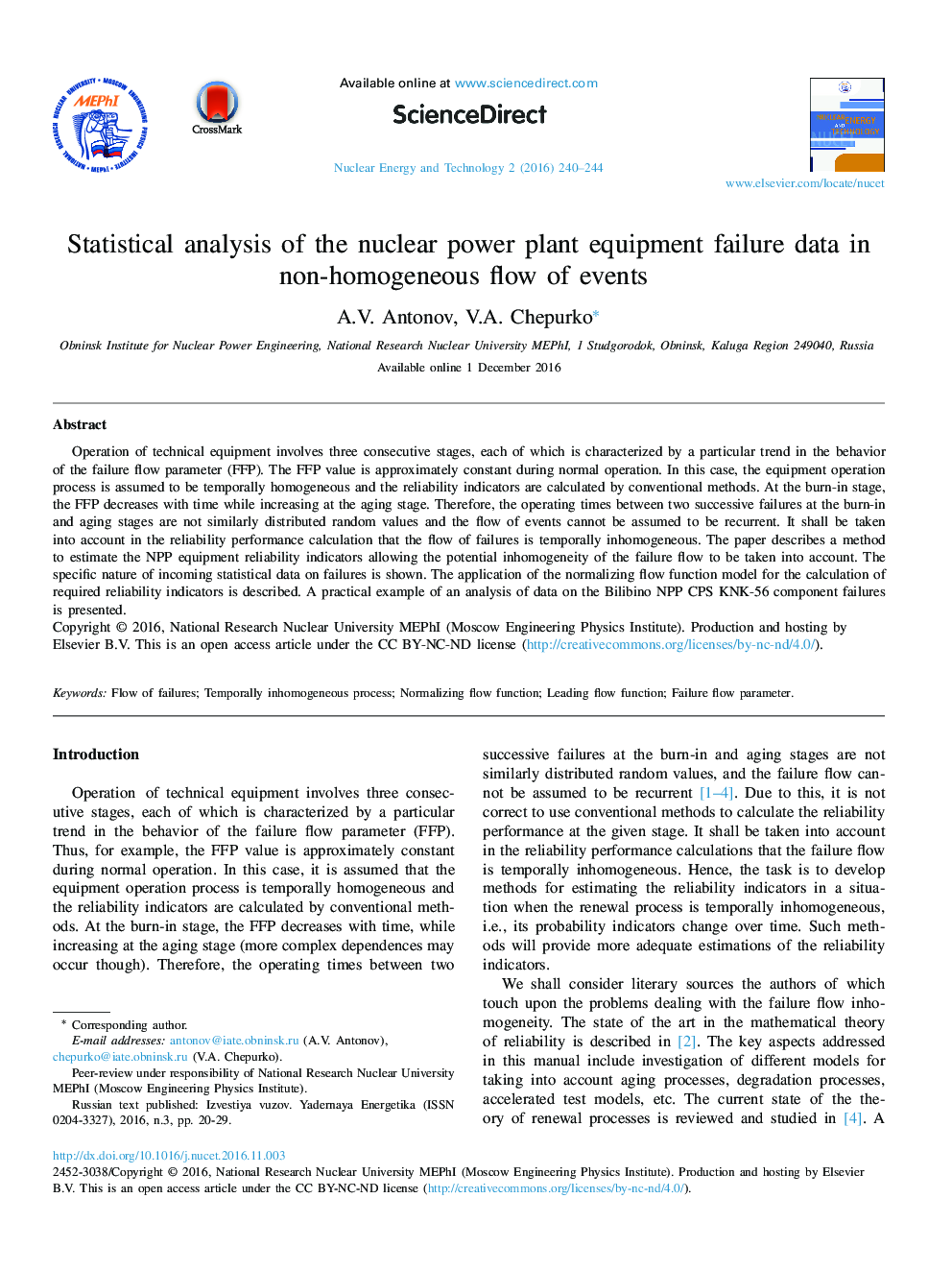| Article ID | Journal | Published Year | Pages | File Type |
|---|---|---|---|---|
| 6846122 | Nuclear Energy and Technology | 2016 | 5 Pages |
Abstract
Operation of technical equipment involves three consecutive stages, each of which is characterized by a particular trend in the behavior of the failure flow parameter (FFP). The FFP value is approximately constant during normal operation. In this case, the equipment operation process is assumed to be temporally homogeneous and the reliability indicators are calculated by conventional methods. At the burn-in stage, the FFP decreases with time while increasing at the aging stage. Therefore, the operating times between two successive failures at the burn-in and aging stages are not similarly distributed random values and the flow of events cannot be assumed to be recurrent. It shall be taken into account in the reliability performance calculation that the flow of failures is temporally inhomogeneous. The paper describes a method to estimate the NPP equipment reliability indicators allowing the potential inhomogeneity of the failure flow to be taken into account. The specific nature of incoming statistical data on failures is shown. The application of the normalizing flow function model for the calculation of required reliability indicators is described. A practical example of an analysis of data on the Bilibino NPP CPS KNK-56 component failures is presented.
Related Topics
Physical Sciences and Engineering
Energy
Nuclear Energy and Engineering
Authors
A.V. Antonov, V.A. Chepurko,
